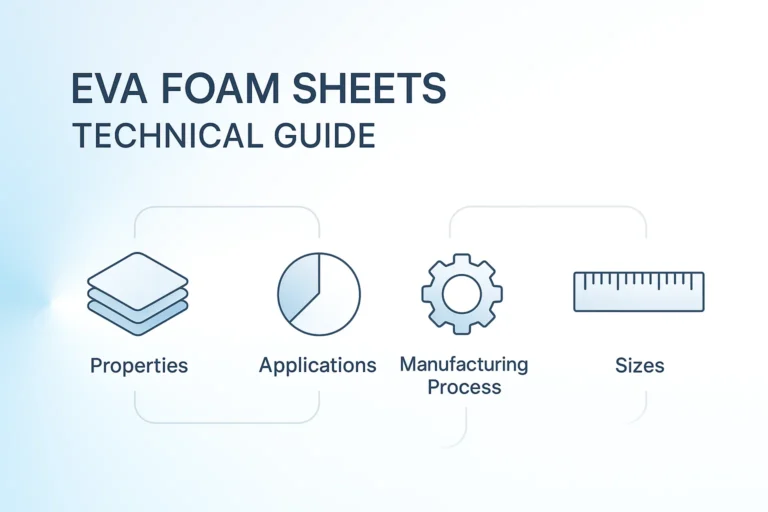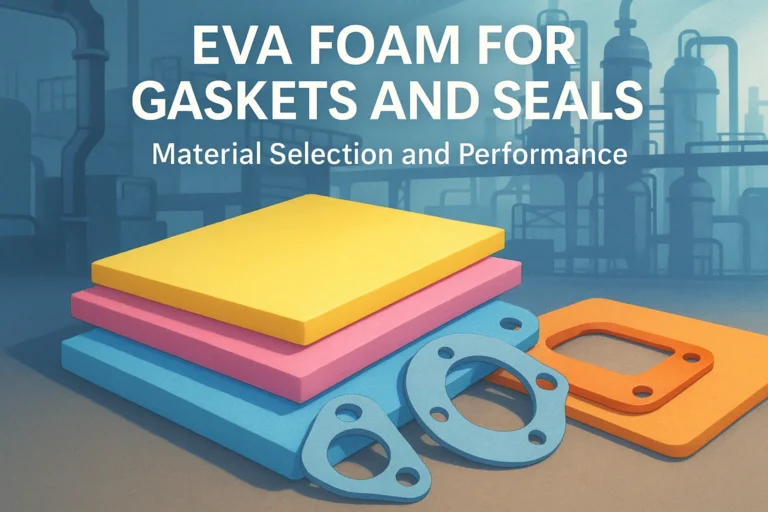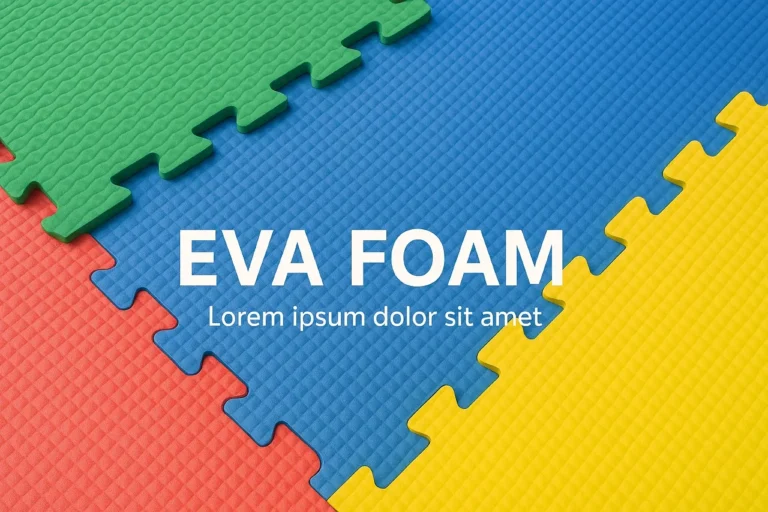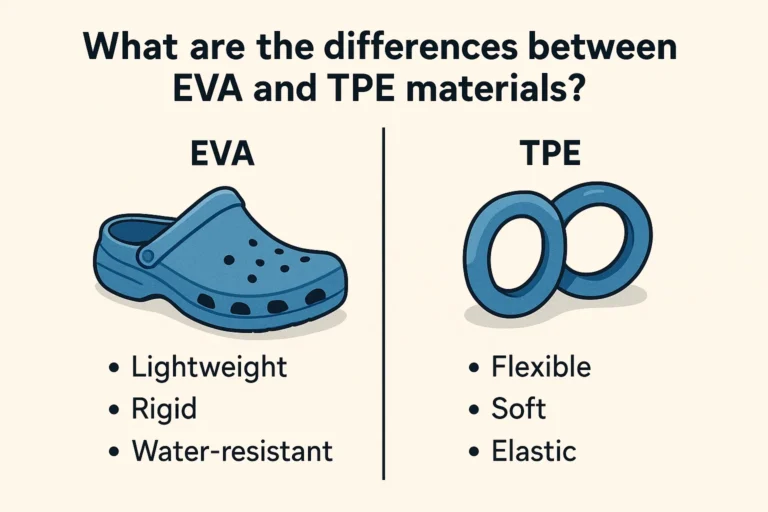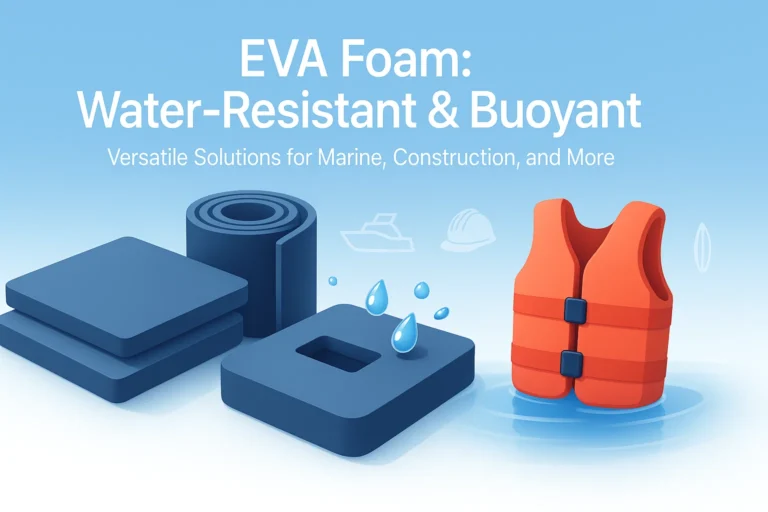How to Cut EVA Foam Cleanly and Precisely
EVA foam is a remarkably versatile material, celebrated by cosplayers, product designers, and DIY enthusiasts for its lightweight, durable, and flexible properties. Whether you’re crafting intricate armor, designing custom case inserts, or prototyping a new product, one challenge remains universal: achieving a perfectly clean, smooth cut. A jagged or torn edge can undermine the professional finish of any project.
Fortunately, with the right tools, techniques, and a bit of know-how, anyone can master the art of cutting EVA foam. As a leading supplier of high-quality foam products, the team at Damao Tech understands that the foundation of a great project is great material and proper handling. This guide will walk you through everything you need to know to get flawless cuts every time.
It Starts with Quality: Why Your Foam Matters
Before we even pick up a blade, it’s important to recognize that the quality of your EVA foam itself plays a significant role in the cutting process. Lower-density or inconsistent foams are more prone to tearing and compressing under a blade. High-density, closed-cell EVA foam, like the premium panels and rolls offered by Damao Tech, provides a firm, consistent structure that resists tearing and allows for much cleaner, more precise cuts. When you start with a superior material, you set yourself up for a superior result.
The Essential Toolkit for Cutting EVA Foam
Your choice of tool will depend on the thickness of the foam and the complexity of your design. Here are the most effective options, from basic to advanced.
1. The Utility or Craft Knife
This is the most common and accessible tool. For clean cuts, the blade must be extremely sharp.
- Best for: Straight lines, gentle curves, foam up to 10mm thick.
- Pro Tip: Use a snap-off utility knife. As soon as you feel the blade dragging or snagging, snap off the old segment to reveal a fresh, sharp tip. Don’t try to force a dull blade—it will only tear the foam.
2. The Hot Knife
A hot knife is a game-changer for many crafters. It uses heat to melt through the foam, resulting in an incredibly smooth, sealed edge.
- Best for: Smooth curves, intricate shapes, and preventing fraying.
- Safety First: Always work in a well-ventilated area and wear a respirator mask, as melting foam can release fumes. Never leave a hot knife unattended.
3. The Scroll Saw or Bandsaw
For those tackling very thick EVA foam sheets or needing to cut multiple layers at once, a power saw is the most efficient tool.
- Best for: Thick foam (20mm+), repetitive shapes, and bulk cutting.
- Pro Tip: Use a blade with a high tooth count for a smoother finish. Run the saw at a high speed to ensure the blade cuts through the foam cleanly rather than grabbing and stretching it.
4. Laser Cutting
For ultimate precision and complex, detailed designs, nothing beats a laser cutter. It can execute intricate patterns with perfectly sealed edges in seconds.
- Best for: Commercial applications, intricate logos, and designs with tight tolerances. Many businesses rely on suppliers like Damao Tech to provide foam that is consistent and optimized for laser cutting applications.
Step-by-Step: Techniques for a Flawless Cut
Having the right tool is only half the battle. Your technique is what will truly elevate your work.
- Mark Your Lines Clearly: Use a silver pen or fine-point marker that stands out against the foam. Press lightly to avoid creating a groove that your blade might follow incorrectly.
- Use a Cutting Mat and a Straight Edge: Always cut on a self-healing cutting mat to protect your work surface and your blade. For straight lines, use a sturdy metal ruler as a guide. Hold it down firmly to prevent it from slipping.
- Master the “Multiple Pass” Method: This is the single most important technique. Instead of trying to cut through the foam in one deep pass, use several shallow ones.
- First Pass: Score the line with light pressure. This creates a guide channel for your blade.
- Subsequent Passes: Follow the scored line, applying slightly more pressure with each pass until you are cleanly through the foam. This method prevents the blade from twisting and eliminates tearing.
- Angle Your Blade: For a standard butt joint, keep your blade at a perfect 90-degree angle to the foam. For beveled edges, consistently maintain a 45-degree angle. Angle guides can be a huge help here.
- Tackle Curves with Care: When cutting curves, move the EVA foam piece into the blade, rather than trying to turn the knife. This gives you more control and results in a smoother, more natural arc.
Finishing Touches: How to Get Smooth Edges
Even with a clean cut, you can further refine your edges. Gently use a high-grit sandpaper or a rotary tool with a sanding drum to smooth out any minor imperfections. A quick pass with a heat gun can also help seal the foam’s pores for a glass-smooth finish.
Damao Tech: Your Partner in Precision Projects
The success of any project is built on a foundation of quality materials and expert knowledge. At Damao Tech, we not only provide a diverse range of EVA foam panels, rolls, and finished items, but we also empower our clients with the expertise to get the most out of them. By choosing our consistent, high-density foam, you’re already one step closer to achieving that clean, professional cut you’re looking for.
Ready to start your next project with the best materials on the market? Explore our full range of high-performance EVA Foam or contact our team for expert advice.
Frequently Asked Questions (FAQ)
1. What is the best tool for an absolute beginner cutting EVA foam?
For a beginner, a sharp snap-off utility knife is the best starting point. It’s affordable, accessible, and an excellent tool for learning the fundamental “multiple pass” technique on foam sheets of 10mm thickness or less.
2. How do I stop my knife from tearing the foam, especially on corners?
Tearing is almost always caused by a dull blade or too much pressure. Ensure your blade is brand new or freshly snapped. Use the multiple-pass method and let the sharpness of the blade do the work instead of forcing it. For sharp corners, cut past the corner on both lines and let the small piece fall out, rather than trying to pivot the blade at the point.
3. Can I cut very thick EVA foam (over an inch) at home?
Yes, but a utility knife becomes less effective. For thick foam, a bandsaw or scroll saw is ideal. If you must use a knife, select a long, sturdy blade (not a snap-off) and be prepared to make many shallow passes. Patience is key.
4. Does the density of the EVA foam really make a difference in cutting?
Absolutely. Higher-density foam, like the grades supplied by Damao Tech, has a tighter cell structure. This provides more resistance and support against the blade, preventing the compression and tearing common with soft, low-density foam. It allows for sharper details and cleaner edges.
Ready to Create with Confidence?
Don’t let poor cuts hold your project back. Start with the industry’s best materials and put these expert techniques to use.
Contact Damao Tech Today to Request a Quote or to discuss your specific EVA foam needs with our specialists!


